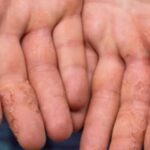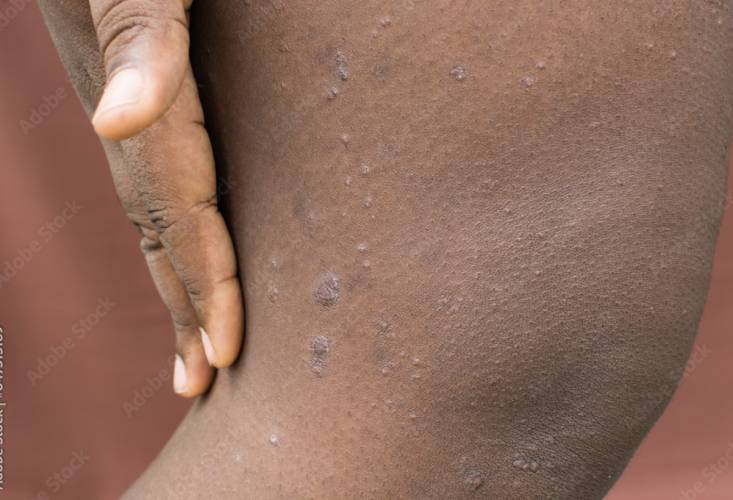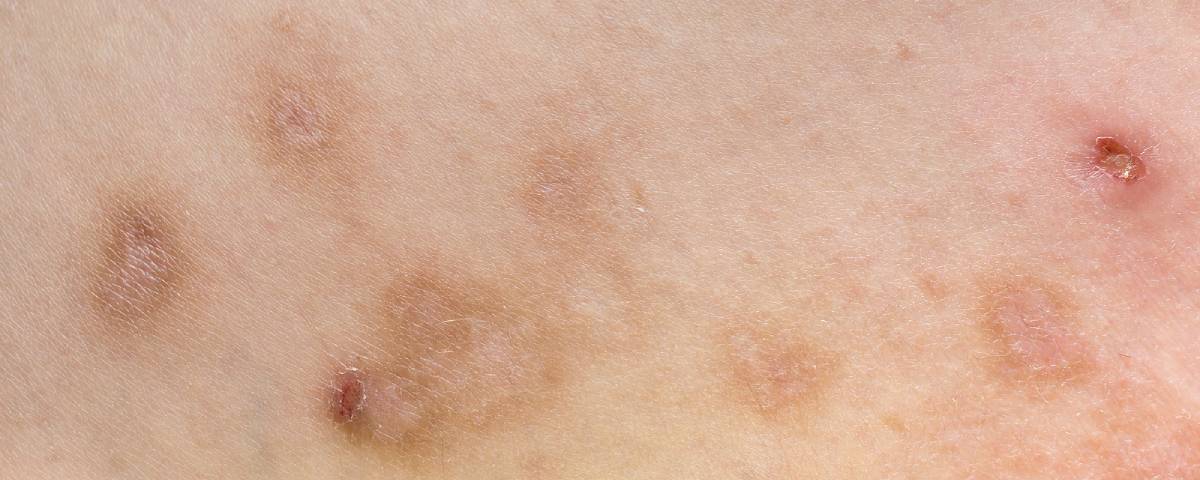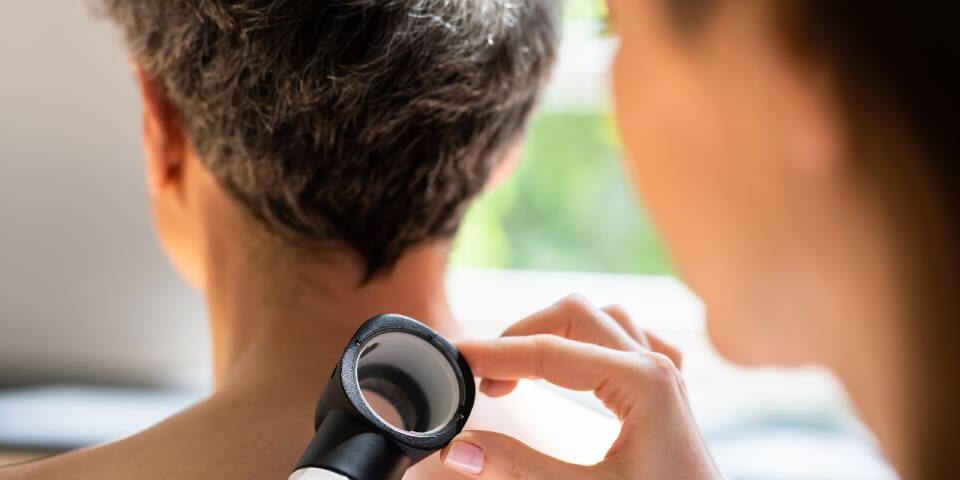
The Future of Palmoplantar Pustulosis Treatment is Being Written in Clinical Trials
September 23, 2025Prurigo nodularis (PN) is a rare, chronic, intensely itchy, and debilitating skin condition that causes eruptions of hard, painful lumps on and under the skin. It is not contagious, but it causes great misery for those who have it. The itching and discomfort can be so severe that it significantly impedes work, sleep, and all daily life activities. The limited dermatology research on PN so far estimates that it affects approximately 72 of every 100,000 people. However, scientists think it may be more common than this because it often manifests with other conditions that can complicate a clear diagnosis. Current prurigo nodularis treatment options exist, but often fall short, adding to the suffering and frustration of patients with the condition. Apex Clinical Research Center is actively running dermatology clinical trials to find better, more effective relief treatments for prurigo nodularis.
What Is Prurigo Nodularis (PN)? The Science Behind the Condition
Prurigo nodularis is a type of neuroimmune skin disease characterized by a severe, chronic itch and the development of hard, itchy, and sometimes painful lumps that form as a result of scratching the itch. Defining the terms within this disease can help foster a deeper understanding:
- Neuroimmune disease—A neurological autoimmune disease is one in which the immune system misfires and stages an attack on either the central or the peripheral nervous system. There are several types of neuroimmune diseases, including well-known diseases such as multiple sclerosis (MS) and lupus. There are many other rare and less-well-known conditions, also, including PN.
- Prurigo—This is a medical term referring to extremely itchy spots on the skin.
- Nodularis—Nodules are lumps that can grow on or inside the body. With PN, lumps can grow on the surface of, or even at deeper levels of, the skin.
Understanding What Drives the Development of PN
As a neurological autoimmune disease, it’s important to understand that the skin, the body’s largest organ, has both immune components as well as peripheral nervous system components. In the case of prurigo nodularis, specific itch-signaling nerves in the skin interact with immune system messengers called cytokines to cause itchy attacks and lump formation in three specific ways:
- Neural pathways: Overactivity in itch-signaling nerves (especially involving IL-31) triggers intense, persistent itch.
- Immune dysregulation: Cytokines like IL-4, IL-13, and IL-31 contribute to both inflammation and nerve hypersensitivity.
- The itch-scratch cycle: Persistent scratching causes skin thickening and further inflammation, reinforcing the cycle.
Scientists currently understand that PN involves both the peripheral nervous system and Th2-mediated immune pathways—making it distinct from purely inflammatory skin diseases.
Prurigo Nodularis Symptoms
At first, PN will manifest as intensely itchy skin. Some people start with just one or two small areas of itchy skin, but some complain of an itch covering larger areas. Sometimes the itchiness comes in short episodes, but for some patients, it persists for most of the day. The itch often worsens at night, and it can last all day long, driving patients to scratch even more. This begins a vicious cycle that only intensifies the itching, scarring, pigmentation changes, and lichenification (the skin becomes thick and leathery because of constant scratching). As a chronic condition, PN can come and go and come back again over time.
Subsequently, the aggravating itchy lumps of PN often develop as symmetrical, hyperkeratotic nodules on arms, legs, and trunk. Hyperkeratosis is a term describing an overproduction of keratin (the same hard substance your fingernails are made of) within the skin. These itchy nodules can appear anywhere, but often develop on the trunk, legs, arms, upper back, shoulders, or even the scalp. The bumps may mimic your own skin color, but sometimes they can be other colors, including red, pink, black, or brown. The lumps can vary in size. In addition to being very itchy, they may also have a burning or stinging sensation.
People who cannot prevent themselves from scratching may scratch open the nodules, causing bleeding and wounds that can become infected.
Who Gets PN?
Anyone can develop a case of PN; however, it seems to be more common in African Americans, women, and people over the age of 40. To add to the complexity, one of the most perplexing aspects of PN is that it often (but not always) arises in conjunction with other skin conditions, making it difficult to separate one diagnosis from another. For example, many people who get PN also have skin conditions such as atopic dermatitis (eczema) or psoriasis. Other commonly co-occurring skin conditions include keratoacanthomas, cutaneous T-cell lymphoma, lichen planus, and bullous pemphigoid. PN also seems to happen more often in patients struggling with the following health conditions:
- Diabetes
- Liver disease
- Lupus
- Nervous system conditions
- Chronic kidney disease or kidney failure
- Gout
- Cancer
- Certain viral, bacterial, and parasitic infections
- Iron deficiency
- HIV/AIDS
- Chronic Kidney Disease

Sometimes, certain medications and treatments for other diseases can trigger a case of PN as well. For example, cancer patients undergoing certain varieties of chemotherapy might experience PN episodes.
Is Prurigo Nodularis Contagious?
No, prurigo nodularis is not a contagious disease, and you cannot catch it or give it to someone. Remember, the answer to the question, “What is prurigo nodularis?” is that it’s a malfunction between the immune and peripheral nervous system interactions in your skin. The suffering and difficulty patients experience with PN is excruciating, which is why Apex Clinical Research Center is recruiting patients to participate in dermatology clinical trials now. Our dermatology research aims to find better ways of providing effective, targeted, longer-lasting prurigo nodularis treatment options to stop the itch and relieve the nodules.
How Prurigo Nodularis Is Diagnosed
Your dermatology provider can diagnose PN based on a physical examination and the answers to several questions about your medical history. Clinical diagnosis is based on these criteria:
- An intense itch lasting longer than 6 weeks
- Presence of multiple firm, itchy nodules
- Evidence of chronic scratching
In some cases, your dermatologist may order a skin biopsy to rule out other conditions that present with nodes (lumps). Lab work can also help evaluate potential systemic causes of the itching. An early, accurate diagnosis is absolutely key to preventing PN from getting worse and causing years of distress or wasting time on ineffective treatments.
Current Prurigo Nodularis Treatment Options, and Why Many Fall Short
The following treatments for prurigo nodularis can provide some relief, but they often come with side effects, don’t last long enough for meaningful relief, or the body gets used to the treatment, and it becomes less effective over time. More dermatology research is urgently needed to find better solutions. Here are the most common PN treatments in use currently:
- Topical or injected corticosteroids: These drugs are designed to reduce the inflammation and itching. Some are injected directly into the skin, while others come as anti-itch creams. These can cause some side effects and lose their effectiveness over time.
- Phototherapy: Short, clinically-administered bursts of ultraviolet (UV) light to lesions can reduce the itching and help aggravated nodules heal by reducing immune irritation within the skin. Unfortunately, this type of prurigo nodularis treatment requires several treatment sessions to be effective and doesn’t provide quick relief.
- Oral antihistamines: These medications can moderate the immune system’s attacks on the skin, but long-term use can blunt their effectiveness over time.
- Systemic medications: Agents like gabapentin, antidepressants, or immunosuppressants have also shown some promise in providing PN relief, but they can also cause difficult side effects and are not necessarily targeted to the underlying disease.
The shortcomings of current prurigo nodularis treatment options underscore the critical importance of our ongoing dermatology clinical trials. These new treatments need to be explored, but they are not widely available to everyone who needs them, or they may not work well for everyone. Finding PN treatments that provide better itch relief and healing for more people depends on the type of dermatology research we are doing here at Apex Clinical Research Center today.
Taking the Next Step: Clinical Trials for Prurigo Nodularis at Apex Clinical Research Center
Because it’s a rare disease, PN is considerably under-researched compared to other chronic skin diseases, and yet it creates so much misery at the same time. Dermatology clinical trials are urgently needed to help us identify more effective treatments that are better-tolerated and have fewer side effects for a wider range of patients with the disease.
What Sets Apex Apart
Apex Clinical Research Center has a deeply experienced team of dermatology research experts who have access to investigational medications not available anywhere else. In addition to having this specialized access as part of our clinical trials, we provide intense and personalized support to the volunteers who participate in our dermatology clinical trials. It’s a chance to try something new for your own situation while also blazing a trail forward for patients with the same condition.
Are You Eligible for the Prurigo Nodularis Treatment Clinical Trials?
You may be eligible to participate in our prurigo nodularis clinical trial if you meet the following criteria:
- You have had an official diagnosis of PN for at least 3 months before screening.
- You have a total of at least 20 PN nodules with bilateral distribution. This means you have nodes on both arms, or both legs, or both sides of your trunk at the time of screening and on the first day of the trial.
- Your PN has not responded well to prescription topical medications in the past.
- You are experiencing severe itching.
- You are willing to complete a daily diary of symptoms as the trial progresses.
Prurigo Nodularis Clinical Trial Details
Apex Clinical Research Center is running a Phase 2, randomized, double-blind, placebo-controlled parallel group study to evaluate the efficacy and safety of barzolvolimab in patients with prurigo nodularis.
Patients will be randomized into one of three groups, who will receive subcutaneous injections every 4 weeks. There will be a higher dose group, a lower dose group, and a placebo group.
Those who complete the first 24 weeks of the study will then be eligible for the “Open-Label Extension” (OLE) of an additional 24 weeks. During the OLE phase, all participants will receive active medication.
You Deserve Answers—Prurigo Nodularis Itch Relief
Prurigo nodularis is a terrible, desperately uncomfortable, life-altering condition—but it’s one that science is finally beginning to understand. If you suffer from PN and feel stuck and frustrated by treatment options that have not helped, Apex Clinical Research Center invites you to contact us to learn more about our dermatology clinical trials testing a new prurigo nodularis treatment. You could play an important role in finding a better PN treatment for yourself and future patients. Explore all of our open dermatology research studies, and please reach out to us with any questions or to discuss your eligibility to participate in our prurigo nodularis clinical trial.





